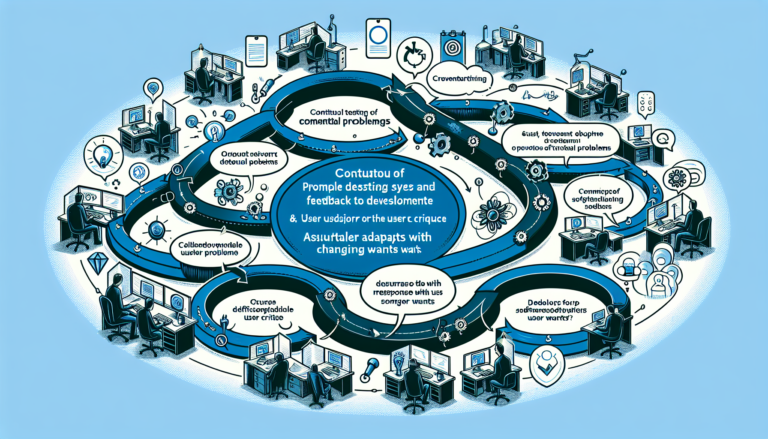“Designing with Empathy: Crafting User Experiences That Resonate”
Understanding user needs through empathy in design is not just a step in the digital creation process; it’s vital for building significant connections with users who interact with your product daily. Imagine being alongside your users, observing their navigation through the digital spaces you crafted. What challenges do they face? What aspects delight them? These insights offer crucial guidance, paving the way for design decisions that genuinely resonate with users.
At the core of this journey is the concept of user personas. Think of them as detailed snapshots of your diverse audience, each representing a distinct segment of your user base. By crafting these personas, you establish a foundation for a design that is not only pertinent but deeply personal. These personas guide your team, reminding them that behind every interaction is a real person with unique needs and goals.
Empathic design thrives on collaboration. It invites creative designers, technical developers, and strategic stakeholders to unite. This collective effort enriches the design process, infusing it with diverse perspectives that result in more inclusive and robust solutions. By fostering an environment where every voice is valued, your team can innovate with empathy at the forefront.
A powerful tool in empathic design is journey mapping, transforming user interactions into a visual narrative. This process reveals every touchpoint and interaction, allowing you to pinpoint areas needing enhancement. As you map these journeys, you gain a clearer understanding of the user experience, uncovering ways to improve the flow and satisfaction of their digital journey.
Empathy also requires establishing a feedback loop, allowing users to share their experiences openly. Regular user testing sessions and feedback mechanisms become your lifeline, channeling user voices directly into the heart of your development process. This continuous dialogue ensures that the product evolves with user needs and technological advances.
Empathy in design requires ongoing evaluation—a commitment to continuously iterate and refine your product. In a digital world where technology is ever-present, ensuring your design aligns with strategic business goals fosters innovation and enhances user loyalty. By embedding empathy into the design process, you’re not just meeting user needs; you’re building lasting relationships grounded in trust and understanding.
For those seeking to explore user-centric design’s impact on business growth, consider reading "Building a User-Friendly Digital City: Mastering UI/UX Design." This resource offers insights into overcoming UI/UX challenges, crucial for crafting memorable digital experiences. Likewise, "Mastering the UI/UX Narrative: Crafting Memorable Digital Experiences for Business Success" delineates a precise path to creating captivating and engaging interfaces.
Explore the power of empathic design further with "Software Simplified: Navigating Development with Ease," available on Amazon. This book unpacks how understanding your users helps you create intuitive, user-friendly interfaces that align with business objectives.
In essence, empathic design is about embracing change and growth. By understanding and prioritizing user needs, you’re enhancing your product and setting the stage for a future where digital interactions are meaningful and engaging. For more insights, check out "Unlocking Business Growth: The Transformative Power of User-Centric Design," which highlights the importance of focusing on user needs during the design process to enhance engagement and loyalty.
Empathy in design is not just a method; it is an ongoing story of human connection, evolving with each new insight and innovation.






